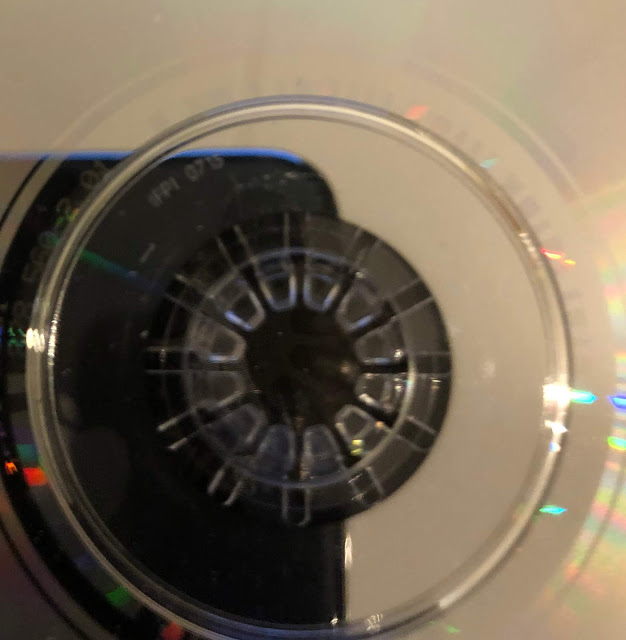When adding a release to Discogs it is important to record as much detail as possible. This means looking at physical releases, discovering what data is there and then entering it. But it is sometimes very difficult to see what actually is on a release. A big challenge is optical media, where some data (such as SID codes) is sometimes unreadable because it is so small. The result: people are missing information, or enter the wrong information.
You basically have no other choice than to magnify. And what better tool to use than a camera? So far I have tried a few things. One thing I tried is a cheap endoscope (originally bought to see deep inside the guts of audio equipment in need of repair), but that is something I would most definitely not recommended, as it is essentially a bad webcam with ditto quality. I also looked at a USB microscope but those are either very expensive, or also webcam quality.
Also, I already have a camera that gives me very good quality pictures, namely my phone. The drawback is that there is no optical zoom (although some zoom can be faked in software), so making really good close ups is difficult.
When making a picture of a CD with SID code I end up with something like this:
which is kind of OK. I can read the SID code (IFPI 0715) but it isn't exactly clear (granted: this was under less than ideal light conditions).
Recently I bumped into some lenses that could transform my phone into a microscope, which sounded interesting. This was originally a project on Kickstarter which is not necessarily a recommendation, as there is a ton of crap on Kickstarter, but this got good reviews, so I ordered a set and tried it.
It arrived and contained a few lenses (I had ordered the full set), in a neat package.
and I decided to try it with the same CD:
As you can see: it is now very easy to see the SID code. I am sure will be using these a lot more for hard to read details and I highly recommend these lenses. Impressive.
You basically have no other choice than to magnify. And what better tool to use than a camera? So far I have tried a few things. One thing I tried is a cheap endoscope (originally bought to see deep inside the guts of audio equipment in need of repair), but that is something I would most definitely not recommended, as it is essentially a bad webcam with ditto quality. I also looked at a USB microscope but those are either very expensive, or also webcam quality.
Also, I already have a camera that gives me very good quality pictures, namely my phone. The drawback is that there is no optical zoom (although some zoom can be faked in software), so making really good close ups is difficult.
When making a picture of a CD with SID code I end up with something like this:
which is kind of OK. I can read the SID code (IFPI 0715) but it isn't exactly clear (granted: this was under less than ideal light conditions).
Recently I bumped into some lenses that could transform my phone into a microscope, which sounded interesting. This was originally a project on Kickstarter which is not necessarily a recommendation, as there is a ton of crap on Kickstarter, but this got good reviews, so I ordered a set and tried it.
It arrived and contained a few lenses (I had ordered the full set), in a neat package.
and I decided to try it with the same CD:
As you can see: it is now very easy to see the SID code. I am sure will be using these a lot more for hard to read details and I highly recommend these lenses. Impressive.



Comments
Post a Comment